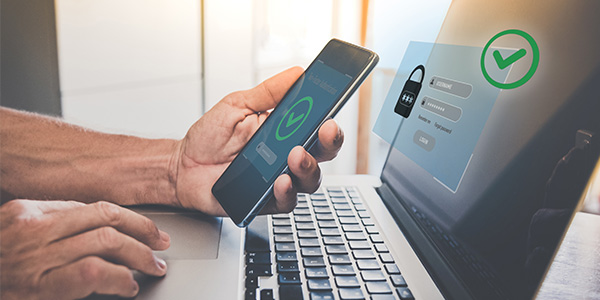For taxpayers looking to pay their taxes online, the Department of the Treasury allows federal taxes to be paid via the Electronic Federal Tax Payment System (EFTPS). However, in late 2023, security around the electronic payment system tightened, and additional layers of security were added around the system to protect taxpayers from any unauthorized access on their accounts.
What is EFTPS?
The Electronic Federal Tax Payment System (EFTPS) is a free service provided by the U.S. Department of the Treasury. It allows businesses and individuals to make tax payments electronically—up to 365 days in advance with 24/7 access. With EFTPS, you can pay a variety of federal taxes, including:
- Income tax payments
- Employment tax payments
- Estimated federal tax payments
- Federal excise tax payments
EFTPS is an efficient and secure method, providing immediate confirmation and tracking of your federal tax payments.
What additional security is required?
Beginning October 19, 2023, users of EFTPS must authenticate their accounts using multi-factor authentication (MFA). This requirement aligns with Executive Order 14028, signed by President Biden in 2021 in response to the growing threat of cyberattacks targeting critical infrastructure, government agencies, and private sector organizations.
MFA is a cybersecurity measure designed to protect accounts by requiring two or more verification factors, making it significantly harder for unauthorized users to gain access. By leveraging MFA, the Treasury Department aims to reduce the risk of fraud and identity theft, protecting taxpayers from potential financial losses and ensuring the integrity of the EFTPS.
What are the options for MFA?
Setting up an EFTPS account and configuring MFA is straightforward but involves a few critical steps:
- Register for an EFTPS Account:
- Visit the official EFTPS website.
- Click on the "Enrollment" button and provide necessary information such as your Employer Identification Number (EIN) or Social Security Number (SSN), bank account details, and contact information.
- You will receive a confirmation letter by mail within 5-7 business days containing your PIN.
- Activate Your Account:
- Use the PIN from your confirmation letter to activate your EFTPS account online.
- During the first login, you will be prompted to set up MFA, a critical step to enhance your account's security.
- Choose Your MFA Option: There are two primary methods available for MFA on EFTPS:
- ID.me: A third-party identity verification service that requires you to provide personal details such as your Social Security number and contact information. This service may also involve document verification and biometric data (e.g., facial recognition). After verification, you will need to set up two-factor authentication (2FA), typically via a one-time code sent through SMS, email, or an authenticator app.
- Login.gov: A government-managed authentication service designed to facilitate secure access to multiple federal online services. It requires you to verify your identity using personally identifiable information, such as a Social Security number or a photo ID. Similar to ID.me, Login.gov enforces 2FA, which could be a code sent via SMS, email, an authenticator app, or even a hardware token for additional security.
How to make a payment using EFTPS
With your account set up and secured via MFA, you are ready to make your tax payments. Here’s how to proceed:
- Log in to EFTPS. Enter your SSN or EIN, PIN, and password. Complete the MFA step using the method you chose during setup.
- Select payment type. Choose the type of tax you need to pay (e.g., estimated tax payment, income tax, or payroll tax for businesses).
- Enter payment information. Input the relevant tax form number, the tax period, and the payment amount. Verify the accuracy of these details before proceeding.
- Schedule your payment. You can schedule payments for the same day or up to a year in advance, giving you flexibility and helping to avoid missed deadlines.
- Confirm your payment. Review the details and submit your payment. EFTPS will provide a confirmation number, which you should keep for your records.
Best Practices for Using EFTPS and MFA
Although using EFTPS to make payments can be safer than sending payments via mail, you should still take precautions. To maximize security and efficiency when paying your federal taxes online, consider the following best practices:
- Register early: Start your EFTPS account registration process well in advance of tax deadlines, helping to avoid any delays—especially in account activation and acquiring your PIN, which must be sent via mail.
- Enable MFA and choose a strong method: Use a robust MFA option like an authenticator app or hardware token, as these methods are generally more secure than SMS-based codes.
- Keep your contact information up-to-date: Ensure your phone number and email address are current, as you’ll need these for MFA verification and account notifications.
- Monitor your account: Check your EFTPS account and your bank statements to verify that payments have been processed correctly. If you notice any discrepancies or have any questions about how the system works, contact a customer service agent at 1 (800) 555-4477.
- Maintain a record of payments: Although the EFTPS saves 15 months of payment information, you should always save the confirmation number for each payment with relevant tax years. It serves as proof of payment and helps resolve any discrepancies with the IRS.
- Stay informed on tax deadlines: Knowing important tax due dates can help you schedule payments ahead of time, avoiding potential penalties for late submissions.
By understanding how to navigate EFTPS and adopting best practices for secure online transactions, you can manage your federal tax payments with ease. If you need assistance with setting up your EFTPS account, understanding MFA options, or any other tax-related matters, our team is here to help.

